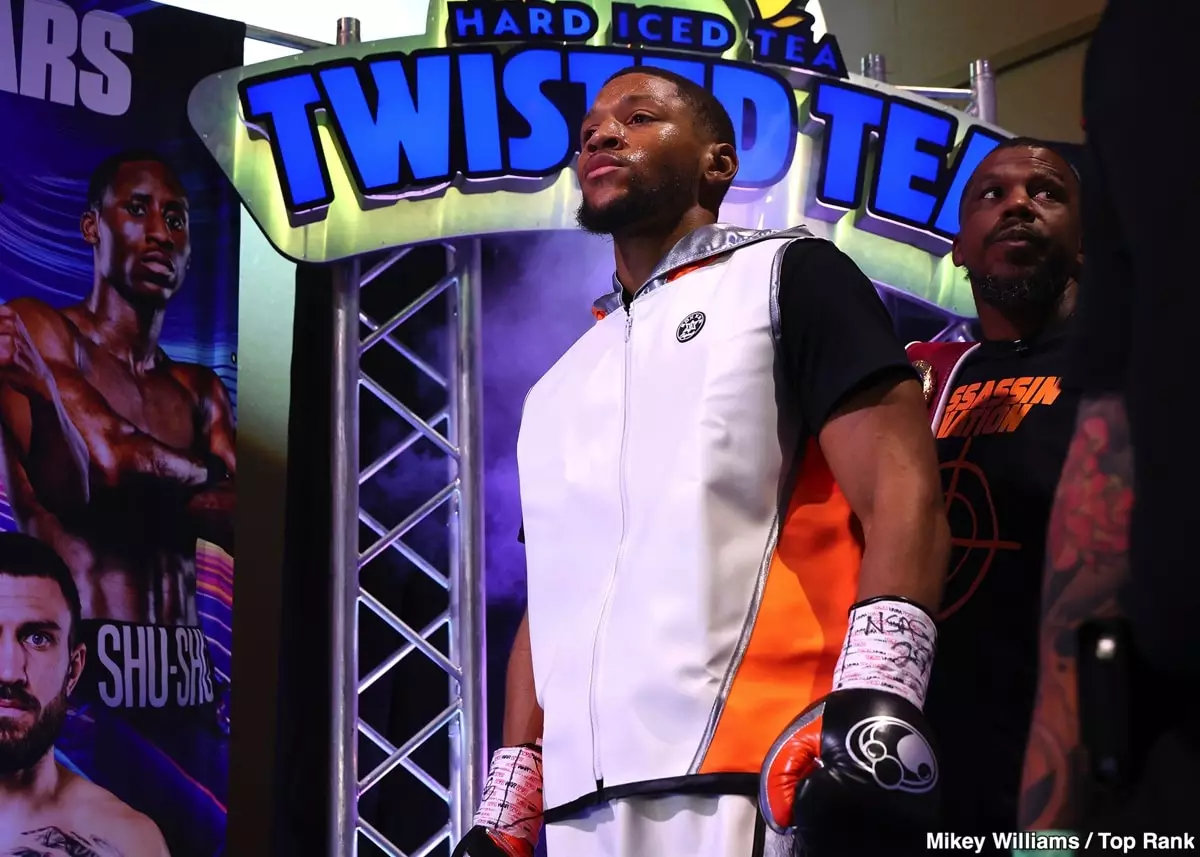The boxing world has recently witnessed intense negotiations over what initially promised to be a momentous unification fight between the IBF welterweight champion Jaron ‘Boots’ Ennis and WBO champion Brian Norman Jr. The very essence of this sport revolves around such high-stakes showdowns that excite the fans and elevate the champions. Yet, instead of a thrilling bout, the talks crumbled under financial disagreements and differing aspirations from both athletes’ camps. The core of the issue seems to revolve around a $500,000 gap—that is, the additional sum Norman Jr. desired to secure the fight on his terms.
Trainer Derek ‘Bozy’ Ennis has vocalized blame toward Norman Jr., asserting that the latter’s resistance to accept the initial $1.7 million offer keeps him out of the ring against Boots. From the sidelines, it’s tempting to point fingers, yet the intricacies of boxing contracts and promotional economics usually mask the real reasons behind such breakdowns. In this modern era of boxing, where finances play a pivotal role in fight negotiations, understanding one’s worth is crucial for any athlete.
Understanding Fighter Valuations in Negotiations
Fighter valuations can be slippery slopes. Norman Jr. perceived the $2.2 million he sought as an adequate figure given the financial burdens he faced from his promoter, Bob Arum, and associated expenses. It’s a valid perspective—after all, professional boxing is not merely a battle of fists; it’s a business. However, the approach to negotiations bears scrutiny. Seeking an increase could indicate confidence but also a misjudgment of market realities.
Throughout his journey as a budding star, Norman Jr. has demonstrated prowess comparable to fighters such as Vergil Ortiz Jr., yet he must recognize that enthusiasm for potential matchups doesn’t always translate into financial backing. While hoping to leverage his title for better contracts, he must also be prepared to navigate the unpalatable offers that often accompany an athlete’s ascent.
On the other side, Team Ennis’ unwillingness to accede to this slight bump in the offer suggests another layer of complexity. Were they genuinely averse to fighting on neutral ground, believing the home advantage in Philadelphia essential? Or were they perhaps attempting to minimize risk against a fighter capable of presenting serious challenges, much as Ortiz Jr. could? While fans speculate the latter, the truth intertwined with business decisions often eludes public scrutiny.
The Consequences of Stalled Negotiations
The fallout of this standoff between Team Ennis and Team Norman Jr. is immediately visible. Boots Ennis had to defend his title against Karen Chukhadzhian, a fight that many observers argue he struggled through. Despite emerging with the win—albeit controversially—his performance raised questions about his readiness to ascend against the elite ranks of the welterweight division.
Rather than reveling in a decisive unification bout against Norman Jr., Ennis appears to have squandered a valuable opportunity, which may have showcased his skills under brighter lights. Some fans might argue that a $500,000 increase is minuscule in context, an investment that could have led to a greater payoff in terms of reputation and career trajectory.
Both camps must now reassess their strategies moving forward. While they maneuver through the complex landscape of accolades, promotional undervaluations loom large. Is it prudent for Ennis to claim a higher status amidst doubts raised by the Chukhadzhian fight? Conversely, Norman Jr. must contemplate whether his absence from this matchup has cost him momentum and fan favor.
The Militarization of Boxing Promotions
Interestingly, the discourse surrounding this negotiation reflects broader tendencies in sports today. Fighters are no longer merely brawlers; they are brands in an increasingly militarized promotional structure. The consequences extend beyond financial compensation; they can shape legacies. When fighters forego valuable matchups fueled by financial indecision, the resultant avoidance can become detrimental not only to their careers but also to the sport itself.
In this context, one can argue whether promoters like Eddie Hearn and Bob Arum are effectively serving their fighters or stifling their ambitions. Investment in potential mega-fights presents inherent risks, but it also represents a chance for athletes to prove themselves under the spotlight. The reluctance to negotiate effectively or sacrifice in challenging situations may inadvertently draw a line between champions and those who falter when stakes rise.
Thus, engaging with negotiations intensely, as compelling fights draw near, creates an ethical dilemma for fighters. Individuals must consider how to balance personal ambition with the economic realities of their trade. This latest turn of events does more than highlight discrepancies between two athletes; it embodies the complexities entwined in the fight business, where the sweet science is often overshadowed by cold, hard cash.


Leave a Reply